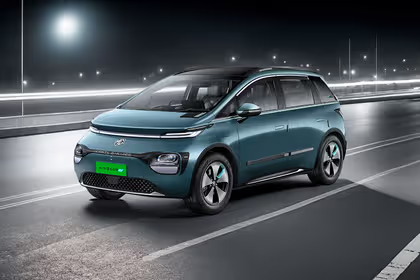Introduction
The transportation sector is undergoing a significant transformation, with electric vehicles (EVs) emerging as the future of sustainable mobility. As concerns over climate change, air pollution, and the depletion of fossil fuels grow, electric vehicles have become a viable solution to reduce carbon emissions and promote environmental sustainability. With advancements in battery technology, infrastructure development, and government incentives, EVs are steadily gaining popularity worldwide. This article explores the benefits, challenges, and future prospects of electric vehicles in shaping a greener and more sustainable world.
What is an Electric Vehicle?
An electric vehicle (EV) is an automobile powered by one or more electric motors, using energy stored in rechargeable batteries instead of traditional internal combustion engines (ICEs) that run on gasoline or diesel. Unlike conventional vehicles, EVs produce zero tailpipe emissions, making them an environmentally friendly alternative. There are different types of electric vehicles, including battery electric vehicles (BEVs), plug-in hybrid electric vehicles (PHEVs), and hybrid electric vehicles (HEVs), each offering distinct advantages and functionalities.
Benefits of Electric Vehicles
1. Environmental Benefits
One of the most significant advantages of electric vehicles is their ability to reduce greenhouse gas emissions. Traditional gasoline-powered cars release harmful pollutants, such as carbon dioxide (CO2), nitrogen oxides (NOx), and particulate matter, which contribute to air pollution and global warming. EVs, on the other hand, have zero tailpipe emissions, making them a cleaner and more sustainable mode of transportation. Additionally, the adoption of renewable energy sources like solar and wind power for charging EVs can further reduce their carbon footprint.
2. Cost Savings and Efficiency
Electric vehicles are known for their energy efficiency compared to conventional internal combustion engine vehicles. EVs convert approximately 77% of electrical energy from the grid to power at the wheels, whereas gasoline engines only achieve about 12-30% efficiency. Moreover, EVs have fewer moving parts, resulting in lower maintenance costs. Owners save on expenses related to oil changes, engine repairs, and fuel costs. Although the initial purchase price of EVs can be higher, incentives, tax credits, and reduced operational costs make them a financially sound investment in the long run.
3. Energy Security and Reduced Dependence on Fossil Fuels
The reliance on fossil fuels for transportation contributes to economic and geopolitical challenges. By adopting electric vehicles, nations can reduce their dependence on imported oil and promote energy security. Additionally, the integration of renewable energy sources for charging EVs supports the transition toward a cleaner and more self-sufficient energy ecosystem.
4. Enhanced Driving Experience
EVs offer a smoother and quieter driving experience due to their instant torque and silent operation. Unlike gasoline-powered vehicles, which require multiple gears to manage power delivery, electric motors provide seamless acceleration. Additionally, regenerative braking technology enhances efficiency by converting kinetic energy into electricity, which is then stored in the battery for later use.
Challenges Facing Electric Vehicles
1. High Initial Cost
Despite the long-term savings associated with EVs, their upfront cost remains a significant barrier for many consumers. The price of EVs is largely driven by battery costs, which have been declining over the years but still contribute to the overall expense. However, government incentives, subsidies, and continuous advancements in battery technology are helping to make EVs more affordable.
2. Charging Infrastructure Limitations
One of the main concerns for potential EV buyers is the availability of charging stations. Unlike gasoline stations, which are widespread, EV charging infrastructure is still developing in many regions. Range anxiety, or the fear of running out of battery power before reaching a charging station, remains a challenge. Expanding fast-charging networks, increasing the number of public charging stations, and integrating home charging solutions are crucial steps toward overcoming this obstacle.
3. Battery Life and Recycling
EV batteries have a limited lifespan, typically lasting between 8 to 15 years, depending on usage and charging habits. As batteries degrade over time, their efficiency diminishes, affecting vehicle performance. Additionally, the disposal and recycling of lithium-ion batteries present environmental concerns. However, advancements in battery recycling technologies and second-life applications for used batteries are being explored to address these issues.
4. Grid Demand and Energy Consumption
The widespread adoption of electric vehicles will increase electricity demand, potentially straining power grids, especially in densely populated areas. To mitigate this challenge, smart grid technologies, demand-response strategies, and investments in renewable energy sources must be implemented to ensure a stable and sustainable power supply for EV charging.
The Future of Electric Vehicles
The future of electric vehicles is promising, with continuous technological advancements and policy support driving their widespread adoption. Several key trends and developments are shaping the future of EVs:
1. Advances in Battery Technology
Battery technology is evolving rapidly, with research focused on increasing energy density, reducing charging time, and improving overall efficiency. Solid-state batteries, which offer higher energy storage capacity and faster charging times, are expected to revolutionize the EV industry. Additionally, breakthroughs in battery chemistry, such as lithium-sulfur and sodium-ion batteries, could further enhance EV performance and affordability.
2. Expansion of Charging Infrastructure
Governments and private companies are investing heavily in expanding EV charging networks. The deployment of ultra-fast chargers, wireless charging technology, and vehicle-to-grid (V2G) solutions will play a crucial role in enhancing the convenience and accessibility of EV charging.
3. Autonomous and Connected EVs
The integration of autonomous driving technology and connected vehicle systems is set to redefine the future of transportation. Self-driving electric vehicles, equipped with artificial intelligence and advanced sensors, will enhance road safety, reduce traffic congestion, and optimize energy consumption. Smart grid integration and AI-powered predictive maintenance will further improve the efficiency and reliability of EVs.
4. Government Policies and Incentives
Governments worldwide are implementing stringent emission regulations, offering financial incentives, and setting ambitious targets for EV adoption. Policies such as tax credits, subsidies, and zero-emission vehicle mandates are encouraging both consumers and manufacturers to transition toward electric mobility. Countries like Norway, the Netherlands, and China are leading the way in EV adoption, setting an example for others to follow.
Conclusion
Electric vehicles are paving the way for a sustainable and eco-friendly future in transportation. With their environmental benefits, cost savings, and technological advancements, EVs are poised to replace traditional gasoline-powered vehicles in the coming decades. While challenges such as high costs, charging infrastructure limitations, and battery concerns persist, ongoing innovations and government support are addressing these issues. As the world shifts toward clean energy solutions, the widespread adoption of electric vehicles will play a crucial role in reducing carbon emissions, improving air quality, and creating a greener planet for future generations.

![🚗 Tata Curvv EV: Price, Range & Specs [2025 Update]](https://yuluelectricbike.com/wp-content/uploads/2025/05/ecqunb_tata-curvv-front-3-quarters-hd_625x300_13_July_24.jpg)









Leave a Reply